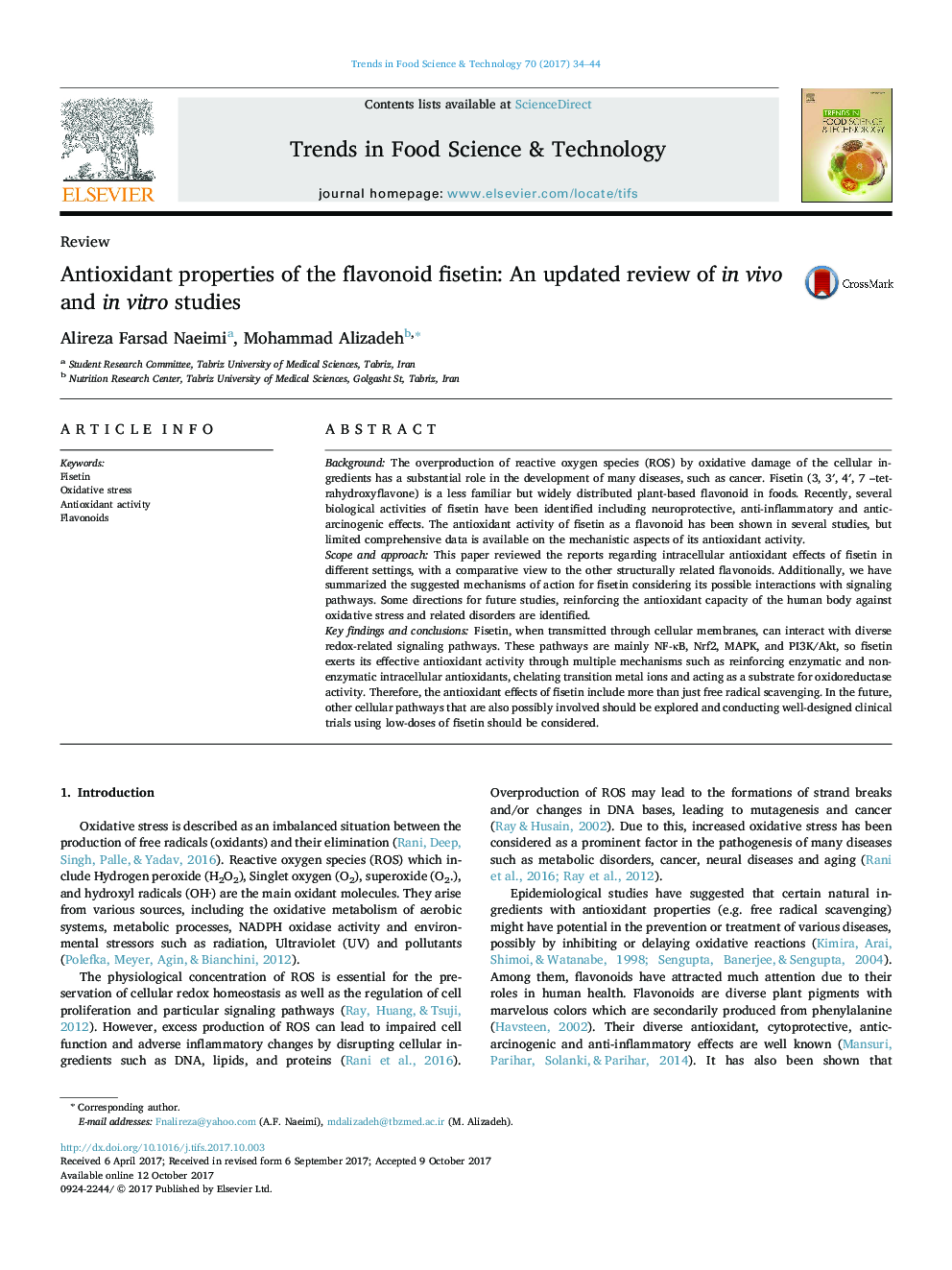| Article ID | Journal | Published Year | Pages | File Type |
|---|---|---|---|---|
| 5523587 | Trends in Food Science & Technology | 2017 | 11 Pages |
â¢The antioxidant activity of fisetin is more than just radical scavenging property.â¢The structure, membrane localization, and environmental factors affect the activity.â¢Several direct and indirect mechanisms are proposed for its antioxidant effects.â¢The mechanisms at least in part, are via interactions with redox signaling pathways.â¢Fisetin modulates NF-κB, Nrf2, MAPK and PI3K/Akt signaling pathways.
BackgroundThe overproduction of reactive oxygen species (ROS) by oxidative damage of the cellular ingredients has a substantial role in the development of many diseases, such as cancer. Fisetin (3, 3â², 4â², 7 -tetrahydroxyflavone) is a less familiar but widely distributed plant-based flavonoid in foods. Recently, several biological activities of fisetin have been identified including neuroprotective, anti-inflammatory and anticarcinogenic effects. The antioxidant activity of fisetin as a flavonoid has been shown in several studies, but limited comprehensive data is available on the mechanistic aspects of its antioxidant activity.Scope and approachThis paper reviewed the reports regarding intracellular antioxidant effects of fisetin in different settings, with a comparative view to the other structurally related flavonoids. Additionally, we have summarized the suggested mechanisms of action for fisetin considering its possible interactions with signaling pathways. Some directions for future studies, reinforcing the antioxidant capacity of the human body against oxidative stress and related disorders are identified.Key findings and conclusionsFisetin, when transmitted through cellular membranes, can interact with diverse redox-related signaling pathways. These pathways are mainly NF-κB, Nrf2, MAPK, and PI3K/Akt, so fisetin exerts its effective antioxidant activity through multiple mechanisms such as reinforcing enzymatic and non-enzymatic intracellular antioxidants, chelating transition metal ions and acting as a substrate for oxidoreductase activity. Therefore, the antioxidant effects of fisetin include more than just free radical scavenging. In the future, other cellular pathways that are also possibly involved should be explored and conducting well-designed clinical trials using low-doses of fisetin should be considered.
